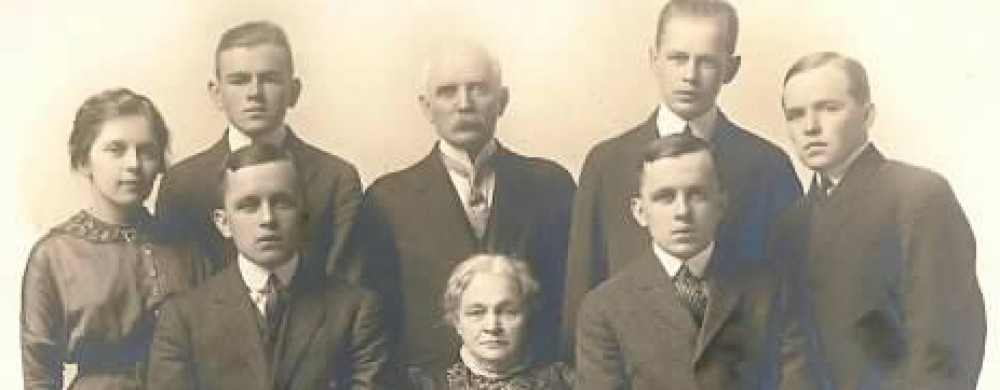There is no song called, “The Ballad of Martin Hurney,” but there should be. if anyone had a life as woeful as that of “Oh my darling Clementine,” (who drowned in her gold digging father’s mine shaft). He came to mind as I read the MassMoments topic for January 21, Sixth Massachusetts Volunteer Regiment Organized.
It’s not that Martin was a member of the 6th Massachusetts, he wasn’t. He had the luck to miss out on being attacked by a crowd in Baltimore, Maryland where a fellow Lowell, Massachusetts man was killed, but it wasn’t long before he himself enlisted (25 May 1861) with the 2nd Massachusetts Volunteer Infantry for a three-year term.
At five-foot eight and one-half inches tall, with blue eyes and brown hair, Martin likely cut a fine figure in his uniform. The 21-year-old Irishman might have been itching to march off to glory, and away from an unexciting shoe and boot making trade. Money played into the decision as well.
In 1860, the first Shoe Makers Strike occurred in Lynn, Massachusetts, not far from Lowell. Industrialists were not paying a living wage to skilled workers. Martin’s pay as a Union private would be a steady $13 a month for his three-year hitch. He couldn’t know, then, the true cost of his decision.
In July 1861, The 2nd Massachusetts Company G left Camp Andrew in West Roxbury for Maryland. For the remainder of the summer and the fall, Martin guarded supply trains at Harper’s Ferry, West Virginia, not too bad. The next order from command, however, was to pursue the rebel general “Stonewall” Jackson down the Shenandoah Valley.
The men were driven hard. They endured hunger, lack of sleep, cold and rain. They slogged through miles upon miles of mud and slept on wet ground. In the battle of Winchester, Virginia in May 1862, Martin Hurney suffered a gunshot would to the hand.
On 29 August 1862, he was admitted to Post Hospital Convalescent Camp in Alexandria, Virginia and remained there five months. He received a surgeon’s discharge for disability on 5 February 1863 with a doctor’s note: “Vertigo and Syncope from cardiac disturbance.” In other words, Martin suffered from dizziness and fainting due to heart irregularities.
Martin’s gunshot hand must have healed, but that underlying heart problem should’ve been concerning. Yet, he apparently felt well enough, four months later, to join the navy. Did he mention his medical condition to the recruiting officer? And, would he have cared at that point in the war? Having served on the gunboats, Ohio and Savannah, he helped maintain the blockade on southern ports until he was discharged on 6 August 1864.
Days later, on 11 August 1864, Martin Hurney joined the Massachusetts Cavalry at Dorchester. In 1885, long after his death, his wife Mary tells us in a letter to the Secretary of Interior, that Martin thought handling horses would easier than his navy duties, but his health soon deteriorated. He fell from his horse “from which he received injuries to the Bowels sent him to Hospital for two months or more at the close of the war. “
Mary also explains why Martin despite serious health conditions, kept enlisting in the service: “Martin Hurney being a poor man and unable to work at his trade and large Bounties being offered as an inducement and unfitted for service in the Infantry and still anxious to serve his country to the end of the Rebellion…”
It was part patriotism and part economic survival, which is pretty much the same reason folks join the military today.
So yes, Martin survived the war. In 1866, he married in Detroit, Michigan, Mary Monahan and the couple had several children. Martin’s health got worse. He often could not work at all. The young family lived in dire poverty. Martin Hurney died on 4 May 1874, not of a heart condition, but of tuberculosis. He was 34 years old.
There was great suffering and a heap of woe in Martin Hurney’s life. He was a striver, he loved his country, and he should have a ballad. But, you know what? I think his wife, his widow, Mary (Monahan) Hurney deserves to celebrated in song as well.
Mary was not yet 30 years old when Martin left her with three little boys, and no money. She, somehow worked to keep them going for six years. In 1880, she finally applied for a widow’s pension. The government ignored her and put her off for 13 years. In 1893, nearly 20 years after war veteran Martin Hurney’s death, the government conceded the debt owed, and specified monthly payment rates for Mary and the surviving children (to age 16), – but the documents in the pension file do make clear that the widow and sons ever received money.
Sources:
Oh my Darling Clementine, Traditional; Genius.com; https://genius.com/Traditional-oh-my-darling-clementine-lyrics
Mass Moments; https://www.massmoments.org/moment-details/sixth-massachusetts-volunteer-regiment-organized.html
Ancestry.com; American Civil War Soldiers; Historical Data Systems.
The Great New England Shoemakers Strike of 1860; New England Historical Society; https://www.newenglandhistoricalsociety.com/great-new-england-shoemakers-strike-1860/
Soldier’s Pay In The American Civil War; “The Civil War Dictionary” by Mark M. Boatner; Civil War Home; civilwarhome.com/Pay.htm
National Archives and Records Administration (NARA); US Civil War Pension Files; Martin Hurney.
